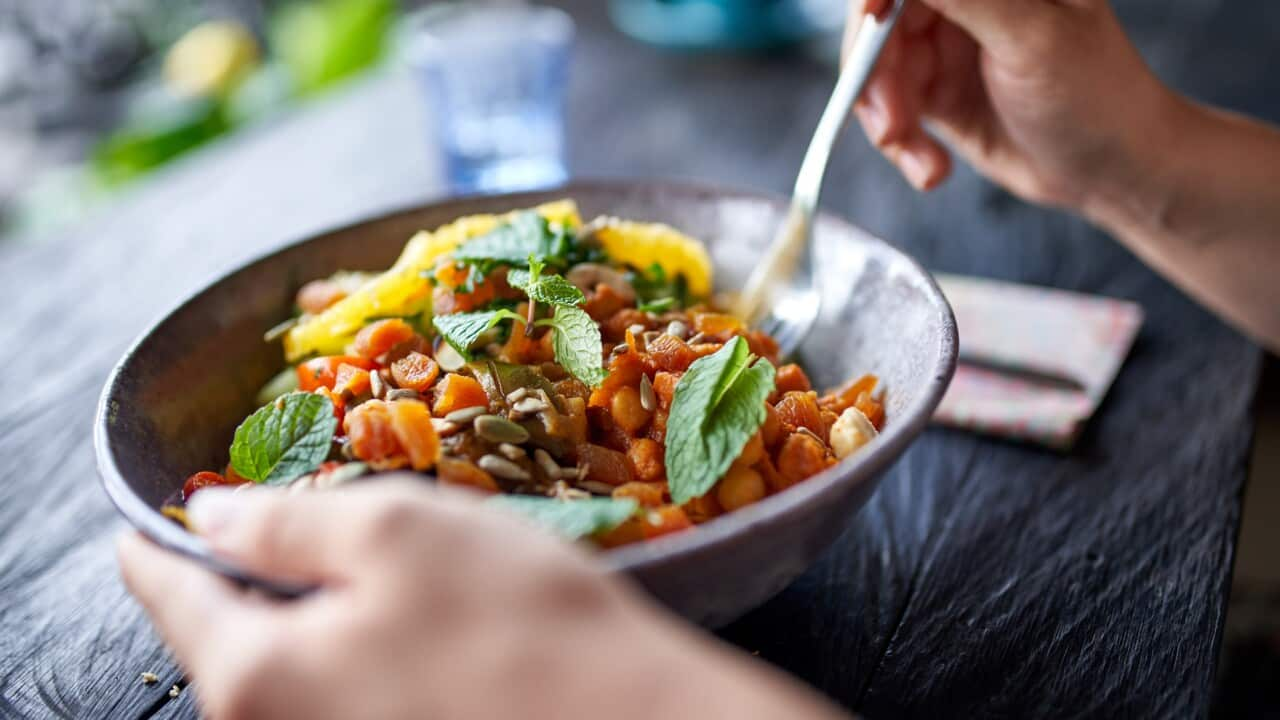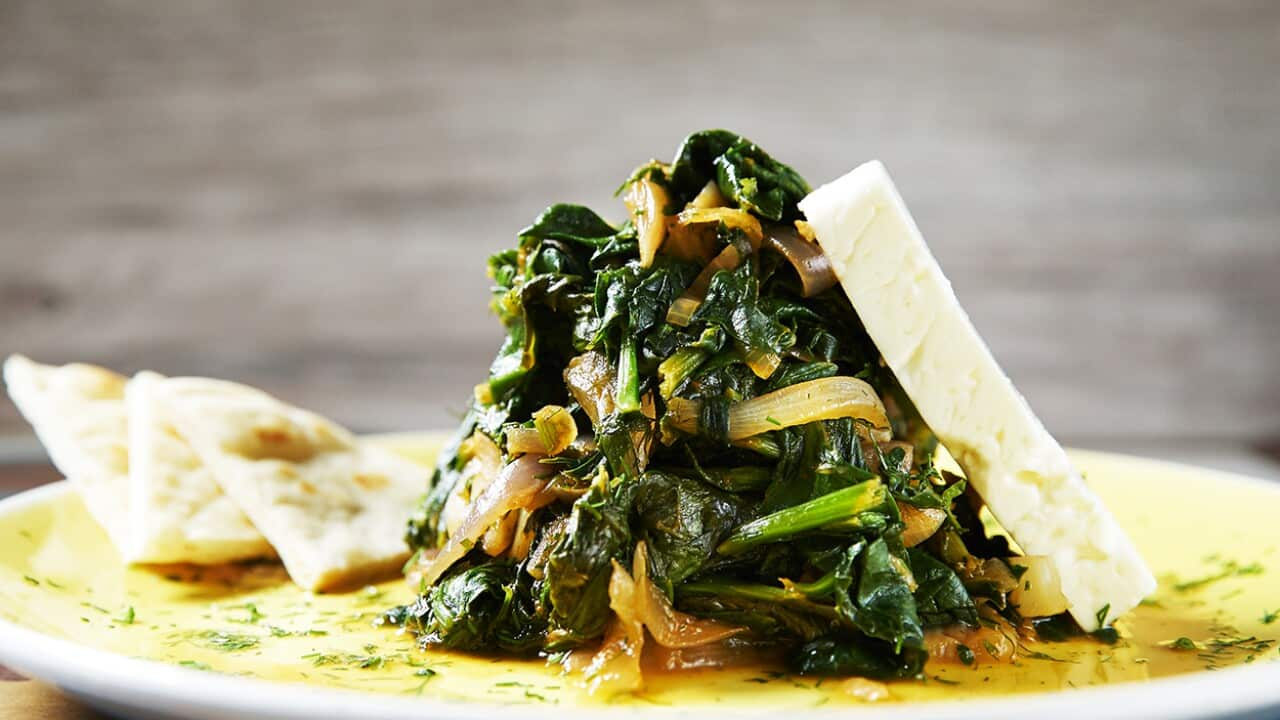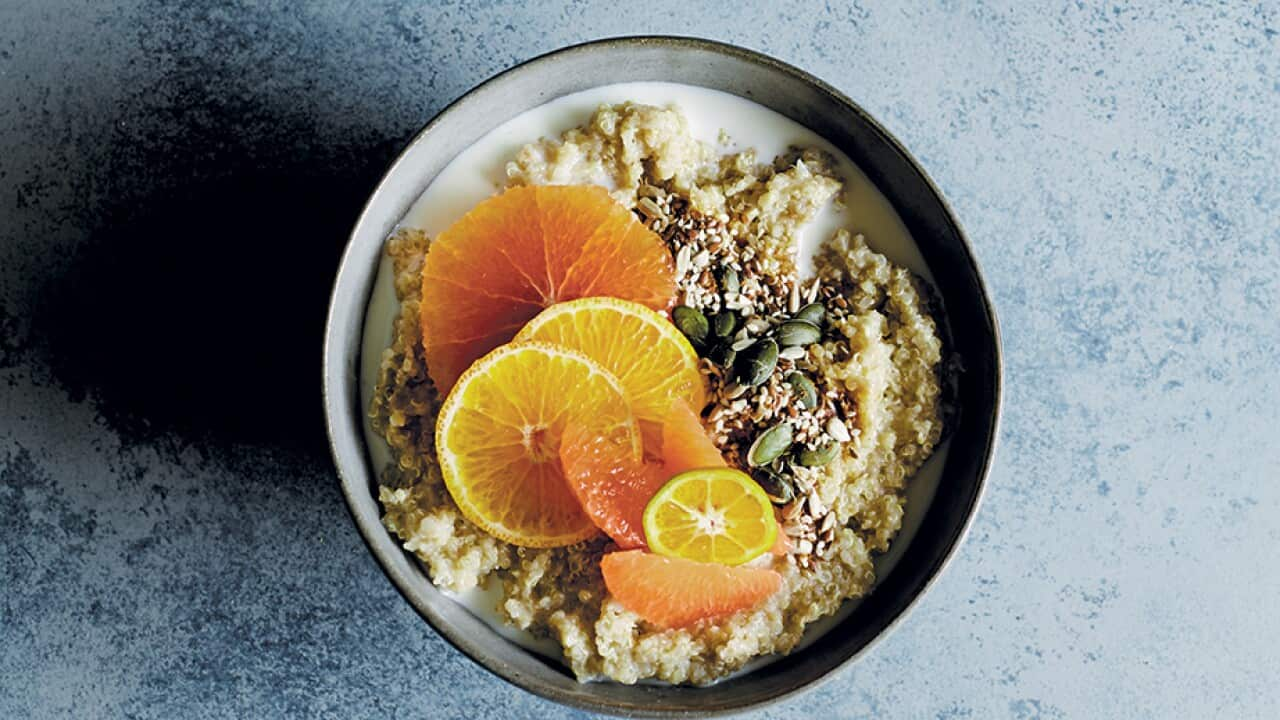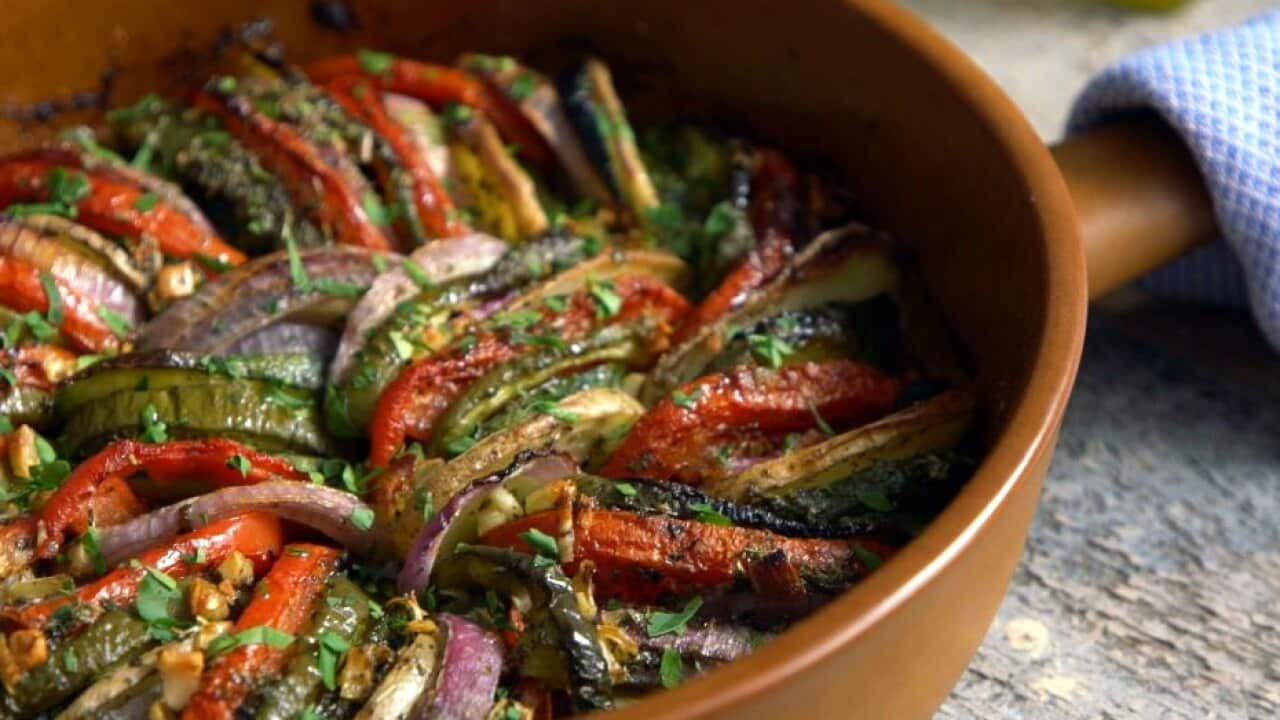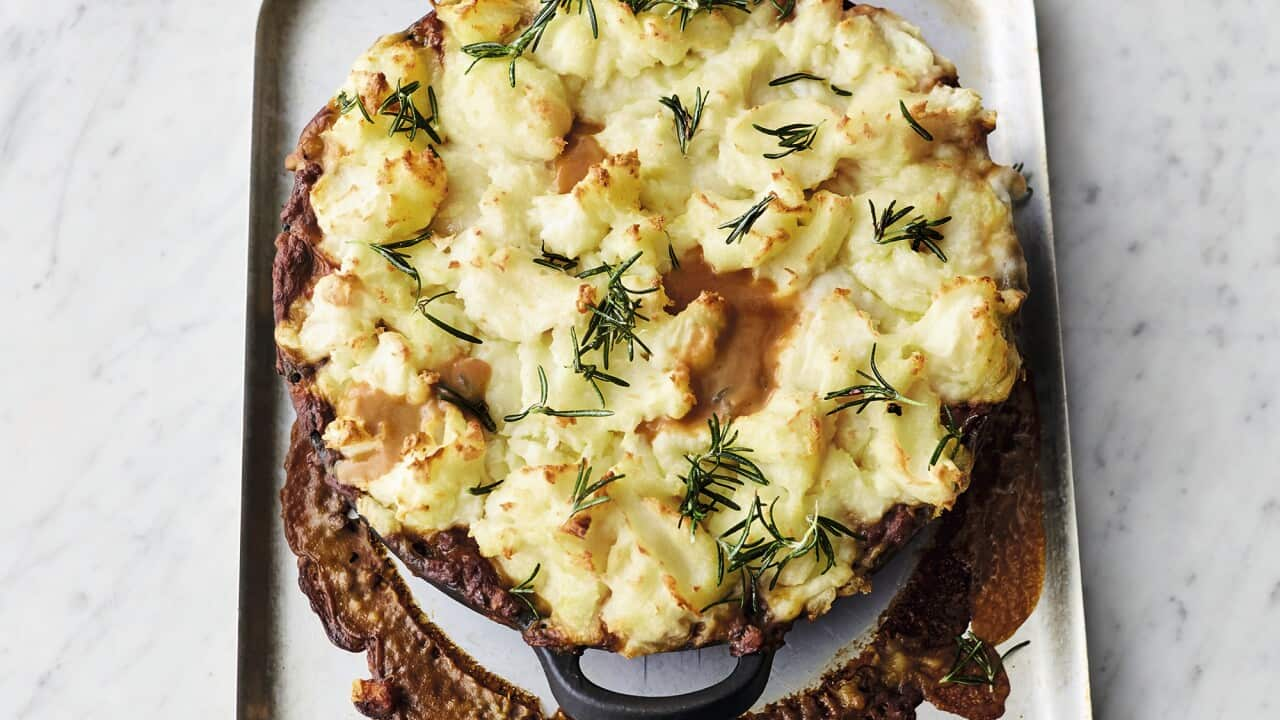Stream free On Demand

Field To Feast
series • cooking
PG
series • cooking
PG
Gut health is now as common a dinner party conversation topic, as, say the latest . No longer relegated to the health nerds, as more research emerges on how pivotal gut health is to our overall wellbeing – from immunity to mood and cognition – all everyone seems to be thinking about is how to improve it.
Turns out, putting – and increasing the variety – can improve our gut health and our overall health too in surprising ways. And the good news is, it doesn’t mean drastic change; with some expert tips, you can start small and find ways to incorporate in ways work for you, your life, and the way you like to eat.
We’ve long known that eating fruit and veg is good for us, providing important nutrients and reducing the risk of various health conditions. But it’s not just about volume – research is increasingly suggesting that variety is hugely helpful too.
“Eating a variety of plants is one of the best ways to support a healthy gut. Different plants contain different types of fibre and natural compounds (bioactives), which feed the good bacteria in your gut. The more diverse your diet, the more types of bacteria it feeds, creating a healthy, balanced gut,” says Sydney-based dietitian , founder of .

Lokanta stew. Credit: Nigel Slater's Middle East
“Plant diversity also brings a range of vitamins, minerals, and antioxidants that help your body in many ways – like reducing inflammation, supporting digestion, and boosting your energy and mood," Dynan tells us.
“Colours are an easy way to think about this. Each colour in fruits and vegetables represents different nutrients and benefits:
- Red foods (like tomatoes) support heart health.
- Orange and yellow foods (like carrots) help your immune system.
- Green veggies (like spinach) are great for energy.
- Purple and blue foods (like blueberries) protect your cells.
“By eating a rainbow of plants, you’re giving your gut and your body the variety they need to stay healthy.”

Banana and berry smoothie bowl. Credit: Clare Winfield
You may have seen 30 plants a week widely suggested as a target – that’s related to research by the (which looked at microbiome specimens from the Unitesd States, the UK and Australia), which found that people who ate 30 different plant species each week had more diversity in their gut microbes than people who ate fewer than 10 plants types a week.
But if that seems a daunting number to aim for, don’t worry. Start small, and see how you go. Both Dynan and fruit and veg expert Thanh Truong have some tips for easing into eating a wider variety of plants.
Truong, aka ‘, author of , host of and a s passionate about helping others discover the joy of good produce, but acknowledges that everyone’s preferences, budget and access to fresh food is different, and not everyone can eat 30 plants a week.
...the small changes we all can make around fruit and vegetables can make our lives tastier and healthier!
“Eating the rainbow is fantastic and goes back to how our bodies were designed as foragers. However, it’s also not possible both practically and financially for many people, as we are all at different stages of our lives, influenced by different cultural food values and have different financial situations. Eating the rainbow sure is great for your health and produce has predominantly been marketed as the healthy/nutritious option. Whilst true, health marketing has struggled to compete against ultra processed food and the big food machine. My philosophy is that ‘good food starts with good produce’,” he says.

Stir-fried snow pea shoots. Credit: Plum / Mark Roper
We also asked Truong – a dad with a young family – whether he had any tips for parents wanting to encourage their children to try new fruit and veg.
“Kids reflect your excitement and enthusiasm – or lack of – when eating food, so if you’re excited about vegetables at dinner they will be too, if you’re excited to go blueberry or strawberry picking or that oranges are tasting fantastic right now, they will be too. The second battle is selecting a fully ripened fruit, as it will have more flavour which I define as a balance and intensity of sweetness, sourness and of good texture.”
And for those who might have health conditions, such as those on a low FODMAP diet, that might make them a little hesitant, Dynan has some helpful suggestions.
“The key is to take it slow and focus on small, simple changes. Over time, your gut will adjust, and you’ll feel the benefits of adding more variety to your meals.
“Here are some easy ways to get started:
- Start small: If you’re not used to eating many plants, begin with just one or two new ones each week. For example, add some grated zucchini to pasta or a handful of spinach to your smoothie. Try to include at least two different colours on your plate at each meal – it could be as simple as pairing orange carrots with green beans or adding purple cabbage to a salad.
- Go gentle on your gut: If you have a sensitive gut, or conditions like IBS, start with low-FODMAP plant options like zucchini, spinach, or canned lentils. Cooking your veggies can also make them easier to digest.
- Add herbs and spices: Even small amounts of parsley, mint, turmeric or cinnamon can add plant diversity and extra nutrients.
- Use convenient options: Frozen veggies, canned beans, and pre-washed salad mixes are affordable, quick, and just as good for your gut.
- Think beyond veggies: Diversity isn’t just about vegetables! Include seasonal fruit, wholegrains, nuts, seeds for a gut-friendly mix of plants. "

Credit: Bondi Harvest
Thinking beyond fruit and veg is a point that also makes in his new book, The Food for Life Cookbook.
“Embracing a diet with 30 different plant species each week encourages culinary creativity, and it’s not as difficult as you might think. It invites us to expand our palate beyond the usual suspects of what we traditionally view as ‘plants’ to include a broader range of vegetables, fruits, grains, nuts, seeds, herbs and spices. This not only benefits our gut microbes, but also enriches our culinary sensory experience,” he writes.

Creamy kale pasta. Credit: Jonathan Cape / Issy Croker
“Eating a wider variety of plants is really about increasing what you offer your gut microbes by adding to what you already eat. This is definitely not about eliminating your firm favourites; if you love celery, apples, bananas, carrots and cucumbers, that’s wonderful. Just don’t forget they won’t provide everything your gut microbiome needs for optimal health.” Spector is also a big fan of fermented foods as another way to add variety and support good gut health.
Truong suggests some simple swaps as a good place to start increasing variety. “For veg, go for substitutes every now to change it up: cauliflower over or with broccoli, wombok over or with bok choy, sweet potato over potato.” For fruit, he says, explore what’s in season – and remember that late season fruit always has more flavour.
And is there a fruit or veg he thinks is underrated, and that he’d love to see more people trying? “Chestnuts… They’re sweet, nutty, filling, wholesome, nutritious and really simple to cook on their own with some of which you can prep in under 15 minutes with an air fryer!”
February is Gut Health Month in Australia. Find gut health and nutrition resources, including recipes, at the .
DELICIOUS WAYS TO PUT MORE PLANTS ON YOUR PLATE

Cabbage salad with chilli, mint and sesame seeds

